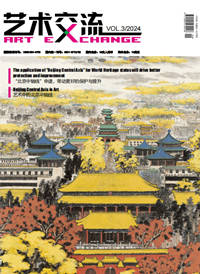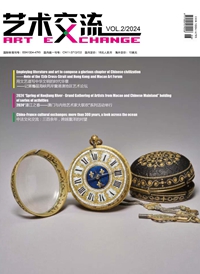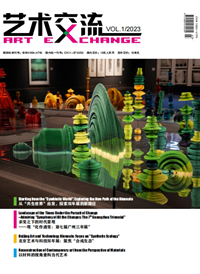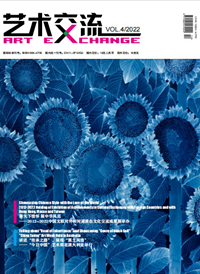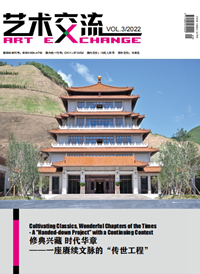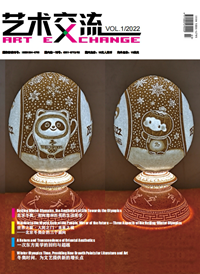
A corner at tea garden at Lanhe Village of Wengyuan, Shaoguan City in Northern Guangdong

Tea picking by tea girls at Lanhe Village of Wengyuan

Flourish ancient tea trees in deep mountains at Luokeng Town

New tea trees naturally bred by ancient tea seeds at Luokeng Town
As a junction of Guangdong, Jiangxi, Hunan and Guangxi provinces, the Northern Guangdong Area mainly includes Shaoguan City and counties and districts under Qingyuan City. Great mountain with pure water and fine-quality tea, the region is called the hometown of tea. At present, only in Shaoguan City, tea cultivation occurs in nine counties and districts, such as Wengyuan, Shixing, Ruyuan and others. According to the assessment by the authority, the Northern Guangdong Area, amongst all the ten tea villages in Guangdong Province, includes Luokeng Town of Qujiang District, Hongshan Town of Renhua Disctrict and Yingde town of Qingyuan City, showcasing some well-known tea brands, such as Snowflake Rock high mountain tea from Luokeng of Quyuan, original ecological black tea of Houcaihong, Yinhao tea of Hongshan, Renhua, white-hair tea of Yanxishan, Lechang, and black tea of Yingde, Qingyuan. These top-quality teas, with their long history, excellent quality and unique aroma, attract visitors from around the world.
In early spring, February, it still felt quite chilly. We drove to Luokeng Town of Qujiang District. Located in the southwest of Shaoguan City, the little town, adjacent to Yinghong Town and Hengshitang Town of Yingde City of Qingyuan to the south, is a famous tea village in northern Guangdong. After more than onehour driving, we entered the location of the town government, where I saw the embrace of the mountains, shady trees and gurgling streams without any trace of industry. Looking around the nearby village, it seemed that it has been awakened by the early spring with the thrushes’ pleasant songs by houses, the plant quietly spit out the sprouts after the winter, the misty mountains surrounded by smoke in distance were picturesque showing great vitality of the land.
Exquisite signs of tea culture could be found everywhere in Luokeng Town. This place has been the tea village since ancient times, tens of thousands of ancient tea trees found in recent years and the strong tea culture continued at present time are the effective proof. According to the people in charge of the town, covering the area of 218 squarekilometers, the forest area of 325,000 mu and over 86% of forest coverage, the town has established a national nature reserve. In the past, the Luokeng Town maintains adequate food and clothing with traditional farming and poultry. After the reform and opening up, the town actively explored the economic development model of "one county, one product", and some people began to take the development path of tea plantation by using the technologies passed from their ancestors. In recent years, the town people found ancient tea trees in the mountains in the tea growing process, this amazing discovery triggered the new thinking of the town's economic development. More than 12,000 strains of ancient tea trees over a hundred years have been found after census. To this end, on the one hand, they are required to strengthen the protection of ancient tea trees in accordance with the requirements of nature reserves. On the other hand, relevant experts are invited to conduct research on these ancient tea trees. At present, the town has reached 8800 acres of tea garden area and more than 20 tea production enterprises. More than 3600 people from the town are engaged in tea cultivation, production, processing and sales, accounting for 1/3 of the town's total population. And tea farmers received a per capita net income of nearly 20,000 RMB through this item only. Practice once again proves that lucid waters and lush mountains are invaluable assets.
Qujiang tea enjoys a long history. Tea drinkers’ telling history of tea can be found anywhere in Luokong Town, Qujiang District. According to YAN Baoquan, who works in Qujiang federation of literary and art circles, Dictionary of Chinese Tea examines the study of tea by Qi Dynasty’s renowned chancellor YAN Zi (Style name as YING) from the Spring and Autumn Period. YAN Zi is accordingly regarded as "the first man of tea in ancient times", known as the "tea ancestor". Luokeng Town’ ancestors worshipped the "tea ancestor", as a temple dedicated to the "tea ancestor" has been built near the Xinwu Village of the township. According to the records of Tea Scripture of LU Yu, the Saint of Tea in Tang Dynasty: "Lingnan tea is produced in Shaozhou", the Shaozhou tea in the records belongs to the Qujiang tea through thorough research. Guangdong Annals quoted Shaozhou Archives : Nanhua produced the best Dust tea. Nanhua is the Qujiang District at present. Records of Qujiang Archives show: "Tea trees are of many kinds. The leaves can be brewed, with those of strongest sweetness and fragrance produced Nanhua and Luokeng, and the most superb remains unchanged through night." These historical facts show that area like Nanhua of Qujaing District, Luokeng and others were the villages of tea as early as a thousand years ago.
According to the reports, the tea sweetness and fragrance with unchanged color and flavor after soaking overnight from Luokeng Town were due to the unique climate here. It belongs to the subtropical monsoon climate zone, showing large temperature difference between day and night, long sunshine and abundant rainfall. There are 18 streams in the reserve, which are imported into Luokeng Reservoir. The protected area demonstrates complicated terrain, overlapping hills, ravines, dense forests, rich natural resources and a great variety of animals and plants. The ancient tea tree groups found in the area are under fine protection accordingly thanks to its steep location and large number of snakes and lizards around, driving people away.
LAI Guoqing, director of the Guangdong Tea Industry Association, told us about his sentiment about tea: "Snow Flake" high mountain tea originated from the middle of the Tang Dynasty. Tea was collected from alpine forests at locations 500 to 1,200 meters above sea level, bearing unique woody almond sweet and woody flower sweet. This reminds us of a piece of tea song circulating in the mountains of northern Guangdong: "The sun rises halfway up the hill, birds still rest in nest, a young man climbing hills to collect teas with bare foot while sing folk songs; everyone shoulders a hanging basket, crossing forests and rivers and looking at the ancient tea trees in distance with happiness in heart…" As we were immersed in the young man's cheerful tea picking scene, Mr. LAI Guoqing had already soaked us the "almond tea of ancient trees" showing pure and simple color. We carefully tasted the tea, finding it refreshing and cool with moisture, endowing people with unprecedented joy.
At the Pinggangling Houcaihong Tea Company in Luokeng Town, HE Fangping, chairman of the tea association of Qujiang District has introduced the methods of integrating elements of Chinese culture into the tea picking and processing. He said that a mountain was shaped like a monkey in Luokeng Town, winning the name of Hou Village Peak. Legends said that a couple lived here in seclusion, showing their devotion by abstaining from meat and praying to Buddha and kind of all life, having a simple life by income from selling rock tea. Year after year, the couple was getting older. Plum fairy read their virtues, and then transformed into a monkey to accompany the old couple, climbing rocks to collect rock tea for them. The story has touched the world, hence the tea is called Houcai Tea.
Four types of tea of Luokeng Tea as Gu Shu Ya Yun, Gu Shu Shen Yun, Pan Tao Xing Ren Xiang and Gu Shu Gu Yun are of most high quality in admiration and taste. The four teas all show the golden color with translucency in soup, but remain differently charming in taste. "Ya Yun" is gentle and soft with pure and delicate taste; "Shen Yun" is full of sweetness, highlighting the fresh and prominent flavor; "Xing Ren Xiang" spreads fluttering aroma with strong nobility; "Gu Yun" shows strong and pure taste with sweetness and moisture. The four types of tea are much like the characters of four beauties in ancient China, Xishi, WANG Zhaojun, YANG Guifei and Diaochan.
Cleanliness for wiping out troubles; spiritual tastes of nature originate from mountains. Farewell to the tea table, it was already drizzling outside. We were all most refreshed after enjoying tea at this point. Overlooking the mountains at the elegant sea of fog, it occurred to us as if that was the fragrance of tea floating out, and with that aroma, the tea village seemed to be sitting in a fairyland.




